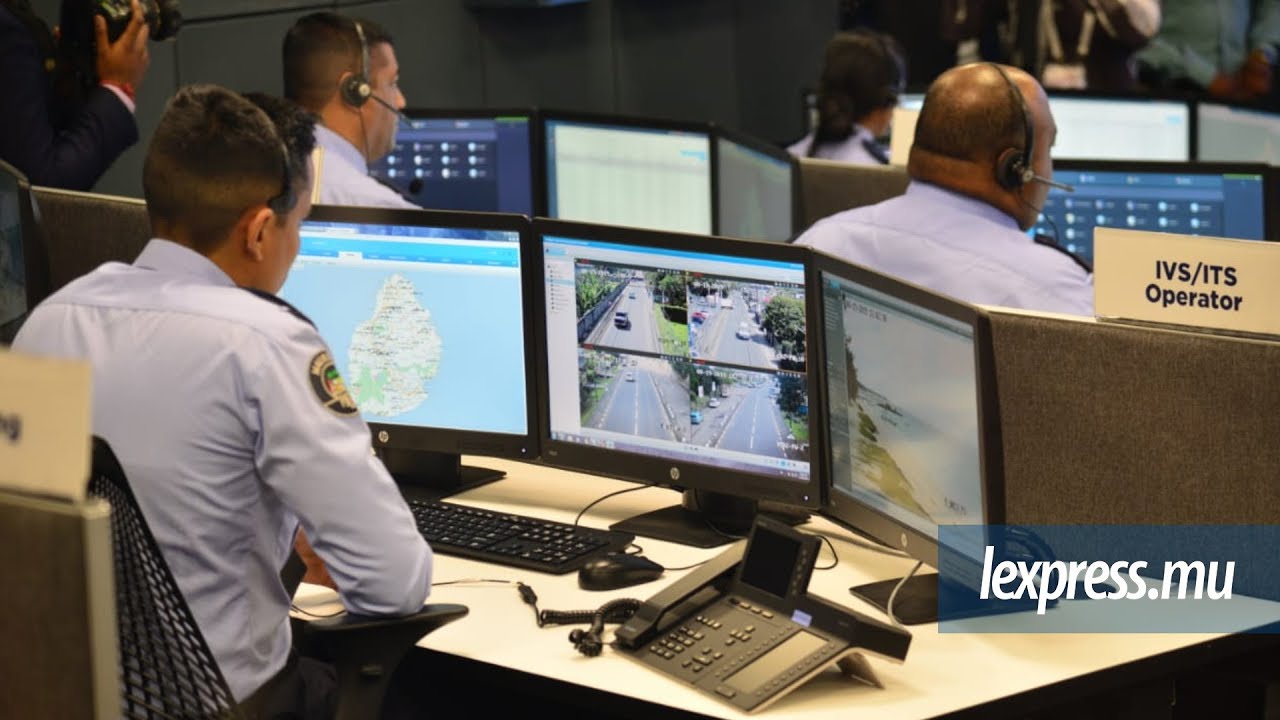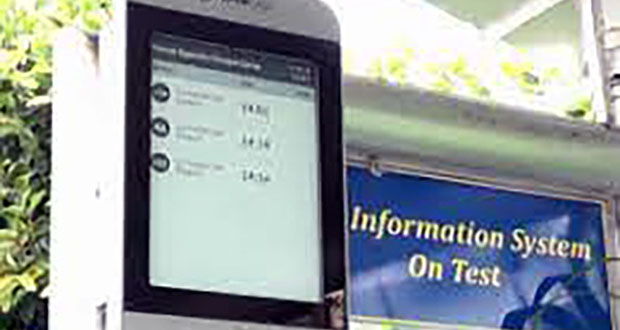Publicité
Technology and E-Government: What the country’s embrace of digitalization and tech looks like…
Par
Partager cet article
Technology and E-Government: What the country’s embrace of digitalization and tech looks like…

For more than a decade now Mauritius has looked to digitise many of its key functions and services ranging from law enforcement and education to the civil service itself. But behind the announcements, what have been the results of the government’s actual integration of technology into Mauritian society?
The push for e-government
Since at least 2007, Mauritius has pushed for incorporating technology in service delivery and its own procedures. That year, for the first time, the then-government came up with a National ICT Policy to push the country to become an information-based economy and information society. That was followed by the National ICT strategic plan 2011-2014 that proposed the introduction of more e-government, a goal that was reiterated in yet another plan in 2013 in the form of the E-Government Strategy 2013-2017. After 2014, the impetus remained the same with yet another panoply of government mission documents being released: the Economic Vision 2030 in August 2015 that boasted of turning Mauritius into a “smart island”, the 2017 Public Sector Business Transformation Strategy, the Digital Government Transformation Strategy 2018-2022 and in 2018, the Digital Vision 2030 to cater for more digitised services and functions offered by the government. By the end of 2019, the government boasted no fewer than 130 different projects to inject more tech into its operations and between 2015 and mid-2019 spent no less than Rs2.2 billion on these projects. The results of all this investment, however, has been mixed at best leading the Public Accounts Committee in its report in March 2018 to demand “an external appraisal of the whole computerisation programme for Government”. So, what has become of the more ambitious digitisation projects launched by successive governments for law and order, citizen services and the civil service?
Big tech for law and order
One of the functions of government long seen as ripe for tech to step in is law and order. Here the obvious example is the Safe City Project, ostensibly run by the police. Costing $465.3 million, the exact terms of an agreement signed between the police and Mauritius Telecom have been kept under wraps even from the government’s own auditors, citing confidentiality clauses in the agreement. Citing section 110(2) of the constitution, the National Audit Office pointed that “the constitutionality of clauses in contracts that deprives the Director of Audit access to public records for audit purposes is questionable”. Nevertheless, in its most recent report, the audit office pointed out that it could not account for Rs760 million spent on the project and that in January this year, only 765 out of the 2,000 cameras installed at different sites in the country were actually working.

But the Safe City project is just the most publicly-known of the tech push in law and order. Other, more discreet attempts at digitizing the police services have been even more problematic. In 1999, the police force introduced an automated fingerprint identification system, creating a database of fingerprint records. However, by 2016, the system itself had become obsolete and the maintenance agreement for the system had expired. What that meant was that when on December 11, 2017, the fingerprint analysis system stopped working, there was nobody to fix the system. Unable to backup the system and with the spectre of a crash of the whole system looming, in 2017, the police looked to replace the system. Initially the Central Informatics Bureau in October 2017 estimated that giving the police a new fingerprint identification system would cost Rs17.2 million. That estimate then ballooned to Rs23 million in February 2018 and then blew up to Rs80.5 million by November 2020. By the end of last year, the government was still struggling to come up with bidding documents.
Then there is the Rs385 million that was sunk into a Crime Occurrence Tracking System for the police. The idea was simple: a digitized databank would allow the police to keep a track of crimes in real time, follow-up on cases electronically without having to lug around case files and allow prosecutors in the justice system to access case files making it easier for the police to work with public prosecutors to send cases to court. The Rs385 million price tag included buying 1,200 computers, 500 printers and scanners, 200 heavy duty printers, a new server costing Rs96 million and Rs145 million for software licences. And when the system was officially complete in 2015, what happened? When government auditors showed up in 2018 and 2019, what they found was that although police constables were feeding information into the system, senior officers were not using it. Case files were still being handled manually on paper and outside prosecutors had no access to whatever was being put into the system. The technology was there, but nobody see- med to be using it. That led the National Audit Office to conclude that so far the Rs385 million put into the system had been wasted.
Citizen services…
One big plank of digitizing government is providing services to citizens. Here too, some of the most ambitious projects seem to have bit the dust. In December 2015, the ICT ministry gave a contract to the company DCL to connect secondary schools, public libraries, the Mauritius Institute of Education and the Government Online Centre through providing wifi. The project was supposed to take 12 months. Progress on the project effectively ground to a halt in November 2017, with DCL itself going into receivership in January 2019. The government had spent Rs84 million on the project but ended up only with ageing hardware and no Internet. In June 2019, the ICT ministry attempted to pass the buck and get the education ministry to take over the project. The latter refused to take ownership of the disaster. “The hardware, installed in some 160 public secondary schools at a cost of Rs84 million has remained idle from day one, with only a portion of its useful life now remaining,” the Public Accounts Committee noted in its report in November 2020, concluding that because of the lack of coordination between the two ministries – ICT and education – “tens of thousands of secondary school children have been denied Internet and wifi facilities in their schools”.

But this was hardly the first failure of digitizing services for the citizenry. It followed a long pedigree of other projects that, once announced, simply did not make it off the ground. At the urging of the World Health Organization, the Mauritian government in 2013 announced the start of an e-health project – to allow hospitals to share patient information and keep track of cases across the public health system – that was supposed to be completed in 2018. Nothing happened by 2017, when it was relaunched with a budget of Rs700 million. Little has resulted from that till now. Or the e-agriculture project that was started in 2009 to connect agriculturalists across the country to digitised services from the government. Nothing happened until the scheme was resurrected in 2017, this time with its budget growing from Rs52 million to Rs57.25 million. By the time the documents were ready to launch bids in June 2019, the money earmarked for the project had simply lapsed with no money left over in the 2019-2020 budget.
In 2012, the ministry of social security caught the digitisation bug. It came up with an e-Social Security Plan to combat problems such as keeping track of social security payments to help detect fraud and overpayments. With one of the largest budgets in government with the largest network of beneficiaries – in December 2019, 222,000 people were being paid basic retirement pension, 35,000 were on income support and 32,000 on basic invalidity pensions – the project made imminent sense. The cost of the project kept growing: Rs225 million in 2013, Rs526 million in 2014 to Rs558 million in 2016.
Nothing got off the ground with the social security ministry still struggling with systems over 20 years old costing Rs10 million each year just to keep running. In the meantime, the problems the system was supposed to resolve still continue – overpayments in social aid totalled Rs5 million in just 2019-2020 – while beneficiaries still have to show up at offices with stacks of paperwork for each application. Similarly, in June 2018, the Mauritius Standards Bureau looked to set up the MAURITAS Accreditation Management System to better regulate quality in goods and services for products and businesses ranging from IT to food safety. Announced with great fanfare, by October 2019, the government was looking to terminate the contract.
Or take another example: in 2019, the government announced the establishment of a passenger information system costing Rs25.1 million that involved putting up screens at bus shelters allowing people to know when the next bus was coming and how long they would have to wait. Another Rs3.2 million was spent putting GPS devices on 280 buses. What resulted was that the screens merely showed bus arrival times that were scheduled by the NLTA timetable rather than the actual time buses showed up at bus stops. The boards were – and are – now ignored.
Digitizing civil servants…
The ultimate test of digitisation, however, came with a big project to digitise the civil service itself. In November 2013, the government signed a Rs206.4 million contract to install a Human Resource Management Information System across all the ministries in the country. The system, as it was planned, would allow the 57,000 civil servants at the time to access payroll, self-services, learning management and record performance targets. The whole project was supposed to be completed by November 2016. Then it was delayed to December 2019. By September that year, the state had already forked over Rs408.8 million on the project – way above what the project was supposed to cost initially – with Rs39 million out of that spent on training officers to use the system and overtime payments. By that time, none of the features of the systems were actually working; nevertheless, the civil service ministry had still paid Rs47.4 million for technical and service support (for systems not working yet) between 2014 and 2018. By September 2019 itself, the Public Accounts Committee said that even functionaries at the ministry agreed with them when they criticised the whole project for being “grossly overinflated and that it was delayed. An amount of Rs327 million had already been spent and yet none of the modules was operational”.
Also included in the Rs408.8 million that the state had paid for the project were Rs235 million for software licences dating back to 2013. By 2020, the government finally decided to scrap the whole project to digitize the civil service’s human resource operations. That was only after the state had spent a total of Rs422.4 million on the project. Money the National Audit Office did shy from concluding, “the total amount of Rs422.4 million spent on the project has been a wastage of public money”.
Beware the next time the government talks digitisation. If history is any indication, much is the slip between cup and lip.
Publicité
Publicité
Les plus récents






